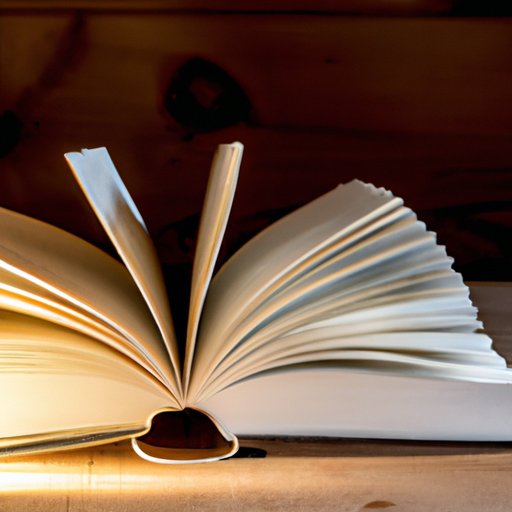I. Introduction
Setting is a crucial element in literature, whether it is in a short story, a novel, or even a poem. It sets the stage for the events that unfold. In this article, we will explore the importance of setting in literature, how it enhances the reading experience, and how writers can use it effectively.

II. Exploring the Importance of Setting in Your Favorite Stories
Setting can be defined as the time, place, and social environment in which a story takes place. It is important because it helps to create a sense of realism and allows readers to better understand and relate to the characters and their actions. A well-crafted setting can transport the reader to another time and place, making the story more engaging and memorable.
For example, the setting of Hogwarts Castle in J.K. Rowling’s Harry Potter series is a crucial element in the story. The castle provides a magical and enchanting atmosphere that is essential to the story’s plot and character development.
III. From Hogwarts to Westeros: A Guide to Understanding Story Settings
Many popular stories take place in unique and fantastical settings that can be difficult to understand. From the fictional world of Westeros in George R.R. Martin’s A Song of Ice and Fire series to the dystopian society in Margaret Atwood’s The Handmaid’s Tale, settings can dramatically affect the story’s events and character development.
Understanding the setting is key to analyzing the story and fully appreciating it. When reading a story, consider the time period, location, cultural background, and any other relevant historical or social context that might affect the characters and plot development.
IV. A Closer Look at Setting: How It Shapes Character and Plot Development
Setting works in tandem with plot development to create a compelling and engaging story. The setting can influence the character’s actions, thoughts, and motivations, and in turn, shape the story’s plot.
Consider the setting of William Golding’s Lord of the Flies, where a group of boys is stranded on a deserted island. The barren landscape and lack of civilization influence the behavior and actions of the boys, leading to the unfolding of the story’s events.
Similarly, the gritty cityscape of Cormac McCarthy’s The Road shapes the characters’ struggles in a post-apocalyptic America, giving weight and realism to the story’s bleak plot.
V. Creating a Sense of Atmosphere: The Power of Setting
One of the most powerful functions of a setting is its ability to create a mood or atmosphere for the story. The setting can set the tone, making the reader feel a certain way about the story before even experiencing the plot. A well-crafted setting can evoke a range of emotions, from fear and unease to happiness and nostalgia.
For example, the weather and landscape in Emily Bronte’s Wuthering Heights contribute heavily to the novel’s dark and foreboding atmosphere. Similarly, the bright and sunny southern town of Maycomb, Alabama in Harper Lee’s To Kill a Mockingbird sets a friendly and welcoming tone for the story.
VI. The Role of Setting in Literature: Examples from Classic and Modern Works
Setting has played an integral role in both classic and modern literature. Consider Ernest Hemingway’s A Clean, Well-Lighted Place, where the setting of a late-night café creates a sense of isolation and melancholy for the elderly characters of the story.
Newer works like Kazuo Ishiguro’s Never Let Me Go use a dystopian setting to explore complex themes of morality and ethics.
VII. The Hidden Meanings Behind Story Settings: Analyzing Symbolism and Imagery
Story settings can also be symbolic and add deeper meaning to the story. A setting can represent something more significant than just its physical characteristics, such as the societal and cultural context of the narrative.
A notable example of this is the forest in Nathaniel Hawthorne’s Young Goodman Brown, where the trees represent the darkness and evil that the protagonist must confront within himself.
VIII. Why Setting is More Than Just a Backdrop: How to Use it to Enhance Your Writing
As a writer, setting can be used to enhance your writing. It can be used to create a unique and memorable experience for the reader and provide additional depth and meaning to the story.
One way to effectively use setting is to pay careful attention to the sensory details within it. For example, describing the smells, sounds, and textures of a particular location can help immerse the reader and make the story more vivid and believable.
IX. Conclusion
Setting is a vital component in literature, providing context and realism to the events and characters within a story. When used effectively, setting can enhance the reading experience and add depth and meaning to the narrative. By understanding and mastering the art of setting, writers can create more compelling and engaging stories.
Now it’s your turn. Consider the setting in your favorite stories and ask yourself what important role it plays in the story’s plot and characters. See how you can use setting to create a unique, memorable experience for your readers.
